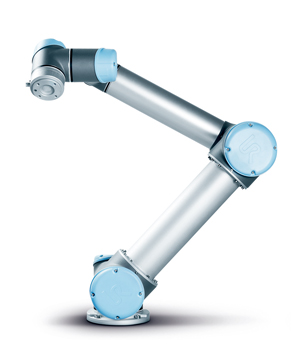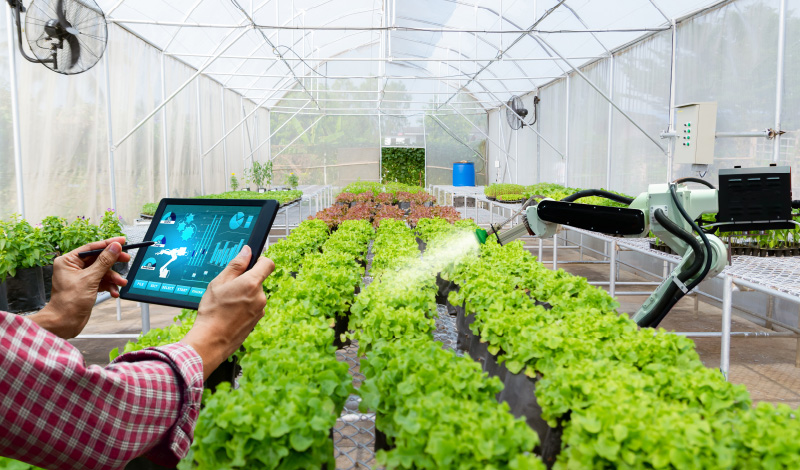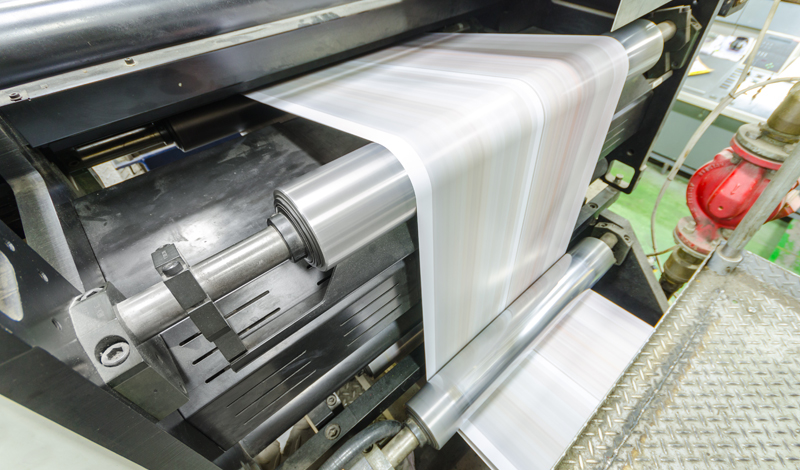Robot SystemResponding to labor shortagesProductivity improvementAutomotive / Industrial machinery / Housing equipment
Packaging process automation solutions
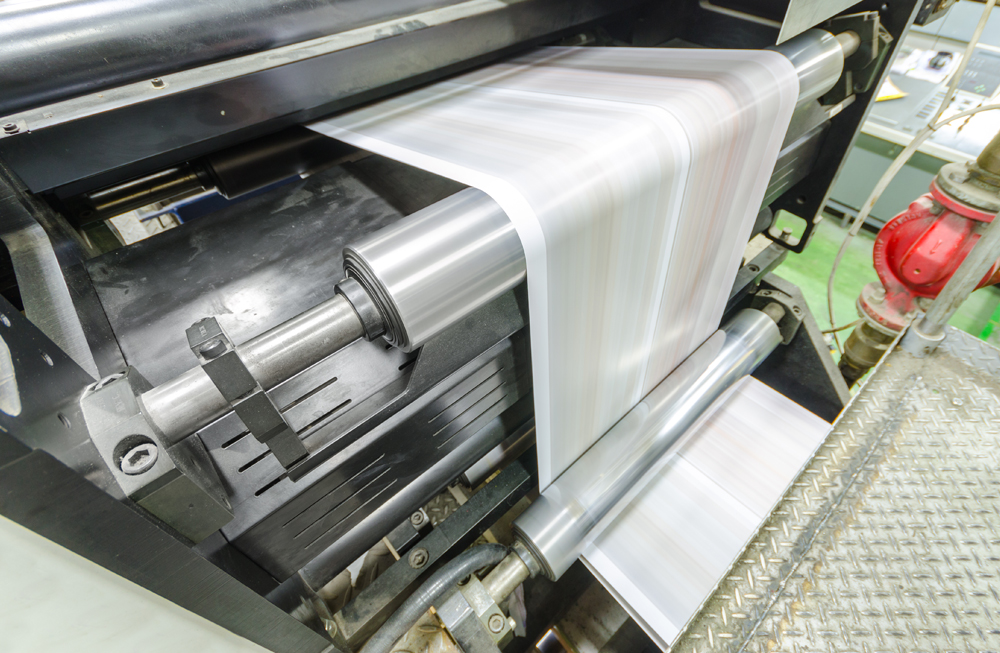
Aiming for "improvement of productivity" and "effective utilization of human resources"
Introduced a collaborative robot to the roll paper production line
- Industry
- Printing industry
- Solutions
- Quality improvement
- System
- Robot System
Outline of the Case
Introduction Background
K, a leading company in business form printing
The production engineering department plays a central role in introducing collaborative robots for the first time.Organized a project team of 4 to 5 people in-house, including the production engineering manager.
We are actively investing in education to promote robotization, and project members are also participating in external seminars and training to acquire the knowledge necessary for building robot systems.
<Situation before introduction>
This time, the target of robotization was the roll paper production line.
So far, we have promoted automation centered on dedicated machines and built a production line that connects the dedicated machines with a conveyor.
However, the packing work in the final process is a manual operation, and the work is monotonous and takes a long time, which imposes a burden on the workers.Therefore, there are variations in productivity.
● Work that was being done
There was a rotary stocker in the packing process, and the finished products were stocked one after another, and the packing work was done manually from this stocker.
The work is usually two people, one person makes "cardboard" and packs the products stocked in the "rotary stocker" in the specified quantity based on the shipping specifications.The other person is in charge of "inspection (checking the quantity in the box and checking the packing condition)" and palletizing the shipping pallets.
<Background of introduction>
Since the existing dedicated machine is a special device, it requires a large installation space.It is difficult to change the existing layout to install a robot, and it is difficult to secure space for an industrial robot that requires a safety fence.
There is a relatively large amount of takt time, and it fully meets the requirements within the safe driving speed of the collaborative robot.
During the busy season, a "collaboration line with humans" was envisioned to support work by humans, and the aim was to introduce collaborative robots.
● Expected effects on robotization
"Improvement of productivity"
Supports long-term, simple, and monotonous work that people have been doing, and improves production efficiency"Effective use of human resources"
Optimal staffing that can utilize human abilities can be done by segregating work<Robot introduction target>
Labor saving Personnel 3/3 ⇒ 2/3, 33% labor saving.Aim to save labor by automating the "boxing work" of the target work
Tact boxing operation within 6 seconds / piece
<Actions taken for introduction>
In this project, the following bottleneck technologies were found at the stage of studying the concept.In order to meet the customer's required specifications, it became necessary to technically verify and eliminate this bottleneck.
・ Handling technology
The material of the product is "paper", and hardness and weight are not a problem for gripping with a robot hand.
However, since thermal paper is mainly used, the gripping force of the hand is too strong, and the hand and products may rub against each other during packaging, which may damage the product, and handling technology is an issue (bottleneck technology). Met.
・ Boxing technology
Multiple products are lined up in one box and put in a box.There is no space between the products, and when the space for the last product of one box is put in, the empty space is small and there is a risk of damaging the box and the product.
・ Support for multiple types
The work shape is cylindrical.A hand that grips multiple varieties with different thicknesses and lengths (heights) without damaging them.
As a result of consultation with the customer, we have you provide a sample of the product and carry out technical verification (preliminary experiment) to eliminate the bottleneck technology for a fee.
Verify hand and product positioning.Improvements based on the results were incorporated into the system specifications, and the system was advanced to the system development phase.
Introduced Solutions

<Contents of the solution>
The individually wrapped roll paper discharged from the pillow wrapping machine is arranged / aligned, and the collaborative robot aligns and places it in the box making box fixed on the jig.
Corrugated cardboard boxes are manually manufactured, placed on a standby conveyor, and automatically transported to a jig for alignment and placement.
The box that has been packed is discharged from the jig and sent to the conveyor.
The boxes on the conveyor are sealed, weighed, and transferred to pallets manually.
In case the roll paper is ejected faster than the boxing tact, a divider is provided at the roll paper inlet and the paper is sent to the existing rotary table.
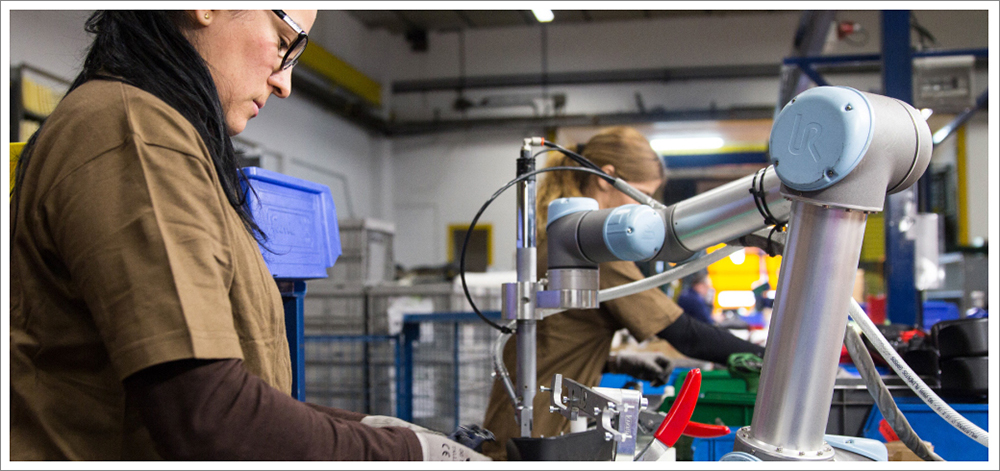
- Articulated robot
- UR-5
- 1 stand
- hand
- Robotic + pickup claw + pusher
(One unit will support 1 types of I, J, K) - 1 stand
- Supply distribution divider
Retractable appearance conveyor - 1 stand
- Alignment conveyor
- (Adjustment required for each I, J, K model)
- 1 stand
- Cardboard supply conveyor
- With accumulator function
- 1 stand
- Cardboard fixing jig
- Combination of fixing pusher and tilting table
(Adjustment required for each I, J, K model) - 1 stand
- Completed box transfer conveyor
- With pool function
- 1 stand
- Robot stand
- Aluminum stand (anchor striking)
- 1 stand
Introduction Results

Future prospects
There are two other similar work lines.Considering the optimum operation and introducing further robots.
Consideration has also begun to automate the transportation and unloading work between processes, which is carried out manually, using AGV / ANR (automated guided vehicle).
Products and Services Used
Universal Robots UR-5
